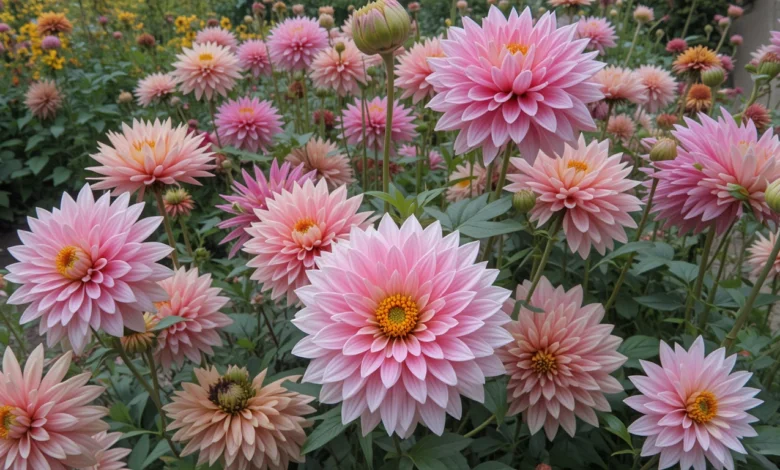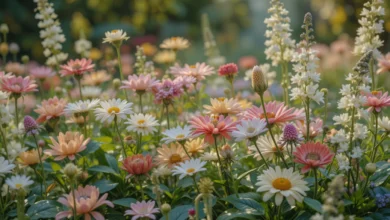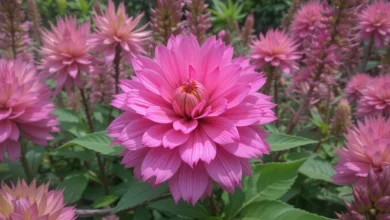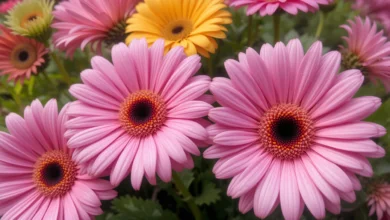5 Critical Mistakes to Avoid When Planting Dahlias in Your Garden

Dahlias are beautiful flowers that can brighten up any garden with their stunning colors and shapes. Whether you’re planting them for the first time or you’ve grown them before, it’s important to know how to take care of them properly. Unfortunately, many gardeners make mistakes when planting dahlias, which can result in weak plants or poor blooms.
In this article, we’ll discuss 5 critical mistakes to avoid when planting dahlias. By understanding these common errors, you can ensure that your dahlias grow healthy and produce beautiful, vibrant flowers. Let’s dive into the most common mistakes and how to avoid them!
1. Planting Dahlias in the Wrong Location
One of the most critical mistakes gardeners make is planting dahlias in the wrong spot. Dahlias need plenty of sunlight to thrive. If you plant them in a shaded area, they will grow tall and leggy, and their blooms may be smaller or less vibrant. Choosing the right spot for your dahlias is essential for their success.
Why This Is a Mistake
Dahlias are sun-loving plants that need at least 6 to 8 hours of direct sunlight each day. Without enough light, they won’t grow as strong, and you may see fewer flowers or weak, spindly growth. Planting dahlias in a shaded area will stunt their growth and prevent them from reaching their full potential.
How to Avoid This Mistake
Make sure to plant your dahlias in a spot that receives full sunlight. This will encourage the plants to grow healthy and produce large, colorful blooms. If your garden is partly shaded, try to find a sunny spot during the afternoon when the sun is strongest. Also, avoid planting dahlias under large trees or bushes, where they may be shaded for most of the day.
2. Planting Dahlias in Poor Soil
Dahlias require well-draining, nutrient-rich soil to thrive. Planting them in heavy, clayey soil or soil that doesn’t drain well can lead to root rot and poor growth. In addition, dahlias need soil that has the right pH level to absorb nutrients effectively. If the soil is too acidic or alkaline, the plant may not be able to access the nutrients it needs.
Why This Is a Mistake
Poor soil leads to weak roots and stunted growth. If the soil doesn’t drain well, water will sit around the roots, causing them to rot. If the soil lacks essential nutrients, dahlias may not bloom or may produce small, unhealthy flowers.
How to Avoid This Mistake
To ensure your dahlias have the best soil conditions:
- Test your soil: You can buy a soil test kit to check its pH and nutrient levels. Dahlias prefer slightly acidic to neutral soil (pH 6.0 to 7.0).
- Improve soil drainage: If your soil is heavy, consider adding organic matter, such as compost or peat moss, to improve drainage and nutrient content. Raised beds are also a good option if your garden has poor soil.
- Fertilize regularly: Adding balanced fertilizer, rich in phosphorus, can help your dahlias grow strong and bloom better. Make sure to follow the fertilizer’s instructions for the best results.
3. Overwatering or Underwatering
Watering is another common mistake when planting dahlias. Both overwatering and underwatering can damage your dahlias and stunt their growth. Dahlias need consistent moisture, but they also need well-drained soil to prevent water from sitting around their roots.
Why This Is a Mistake
- Overwatering: When you water too much, the soil can become waterlogged, leading to root rot. Overwatered dahlias may show signs of wilting, yellowing leaves, or mushy stems.
- Underwatering: On the other hand, if you don’t water your dahlias enough, the plant will become stressed and dry out. The leaves may turn brown, and the flowers may wilt.
How to Avoid This Mistake
To avoid overwatering or underwatering:
- Check the soil: Water the dahlias when the top 2 inches of soil feel dry to the touch. Stick your finger into the soil to check its moisture level before watering.
- Water deeply: When you water, make sure to water deeply, allowing the water to reach the roots. This will encourage the roots to grow deeper into the soil and help the plant stay strong.
- Mulch around the plant: Adding mulch around your dahlias helps retain moisture and keeps the soil cool, preventing it from drying out too quickly.
4. Planting Dahlias Too Early or Too Late
Timing is crucial when it comes to planting dahlias. Planting them too early in the spring can expose them to frost, which can damage or kill the plant. On the other hand, planting them too late can reduce their growing season and prevent them from flowering.
Why This Is a Mistake
- Planting too early: If you plant your dahlias before the danger of frost has passed, the cold weather can damage the tubers, preventing the plants from growing.
- Planting too late: If you wait too long to plant dahlias, the growing season may not be long enough for them to fully mature and bloom. This can result in fewer or smaller flowers.
How to Avoid This Mistake
- Wait for the right time: Dahlias are best planted after the last frost date in your area. Generally, this is when the soil temperature has warmed to about 60°F (15°C) or higher. You can use a soil thermometer to check the temperature.
- Plant in the right season: If you live in a colder climate, consider starting your dahlias indoors and transplanting them outside once the weather warms up. This will give them a head start and ensure a longer growing season.
5. Not Providing Proper Support
Dahlias can grow quite tall, especially the larger varieties, and their blooms can become heavy. Without proper support, the plants may lean, flop over, or even break under the weight of their flowers. This is a critical mistake that can lead to damaged stems and reduced blooms.
Why This Is a Mistake
Without support, dahlias may fall over, especially in windy weather. The flowers may also get damaged or ruined if they touch the ground. Additionally, broken stems can lead to infection or disease.
How to Avoid This Mistake
To keep your dahlias upright and healthy:
- Use stakes or supports: Place stakes or cages around your dahlias when they are still young. This will help them grow upright and prevent them from flopping over.
- Tie the stems gently: As the plant grows, tie the stems loosely to the stakes with garden twine. Be careful not to tie them too tightly, as this can damage the plant.
- Prune regularly: Trim off dead or damaged stems to encourage healthy growth and prevent the plant from becoming too top-heavy.
Conclusion
Dahlias are beautiful flowers that can make any garden shine. However, it’s important to avoid common mistakes to ensure your dahlias grow strong and bloom beautifully. By planting them in the right spot, providing the proper care, and avoiding overwatering or under-watering, you can enjoy healthy, vibrant dahlias year after year.
So, remember: plant in full sunlight, give them the right soil, water properly, and provide support to ensure a successful growing season. With these tips in mind, your dahlias will thrive and produce stunning blooms to enjoy all season long!




